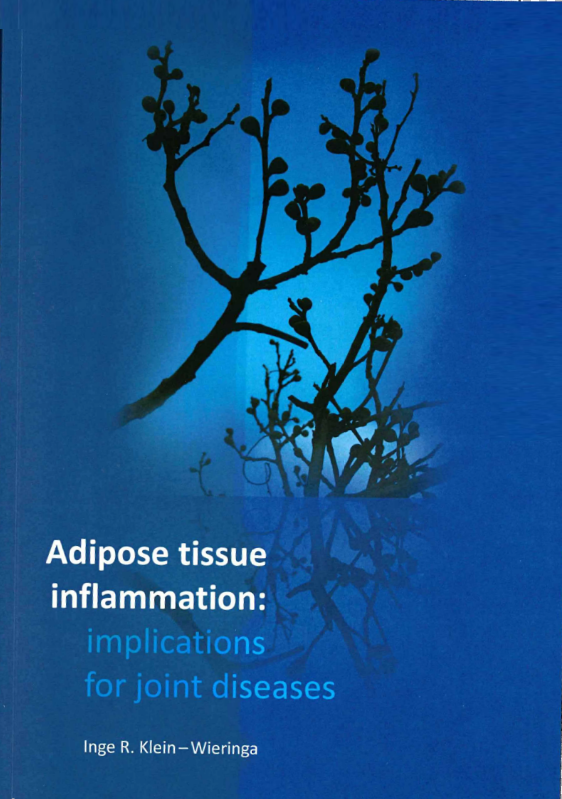Translational science
To this end, three main lines of research have been established.
1) One research line involves the characterization of the inflammatory players in the osteoarthritic synovium, at cellular and molecular level. For these studies, human tissues obtained from various disease stages are studied in vitro. The availability of large end clinically well-characterized cohorts of Osteoarthritis patients allows us to establish correlations between in vitro findings and clinical disease parameters in order to obtain valuable information about the clinically relevant cellular and molecular mechanisms present in synovium.
…To this end, three main lines of research have been established.
1) One research line involves the characterization of the inflammatory players in the osteoarthritic synovium, at cellular and molecular level. For these studies, human tissues obtained from various disease stages are studied in vitro. The availability of large end clinically well-characterized cohorts of Osteoarthritis patients allows us to establish correlations between in vitro findings and clinical disease parameters in order to obtain valuable information about the clinically relevant cellular and molecular mechanisms present in synovium.
2) The crosstalk between the immune system and metabolism and its relevance for Osteoarthritis is studied in the second line of research, with focus on adipose tissue as metabolic organ. The cellular interactions that determine the inflammatory state of the adipose tissue and the effect of adipose tissue-derived mediators on synovium and cartilage is investigated. Human tissues from osteoarthritis patients and mouse models of obesity-induced osteoarthritis are studied.
3) The presence of pro-resolution factors in the osteoarthritic joint and their role in the disease process in osteoarthritis is investigated in the third line of research. The effect of specialized pro-resolving lipid mediators and expression of their receptor on joint tissues such as synovium, cartilage and bone is investigated in vitro using human tissues. Moreover, their possible role in the disease process in osteoarthritis is studied in clinically well-defined osteoarthritis cohorts and in animal models of disease.
The significance of inflammation in adipose tissue for osteoarthritis and other rheumatic diseases
Adipose tissue inflammation: implications for joint diseases
I.Klein-Wieringa, promotie 24 juni 2014
This thesis investigates the role of adipose tissue inflammation in joint diseases such as osteoarthritis (OA) and rheumatoid arthritis (RA). In the first part, we show that baseline levels of circulating adiponectin can predict radiographic progression in patients with early RA. In contrast, in patients with hand OA, this association appears protective. Therefore, to obtain insight into the mechanisms underlying these associations, we investigated the high-molecular-weight isoform of adiponectin (hmwAPN), which is one of the most biologically active isoforms of adiponectin. We show that the associations of total adiponectin with radiographic progression are not mediated by hmwAPN, in either RA or hand OA.
…Adipose tissue inflammation: implications for joint diseases
I.Klein-Wieringa, promotie 24 juni 2014
This thesis investigates the role of adipose tissue inflammation in joint diseases such as osteoarthritis (OA) and rheumatoid arthritis (RA). In the first part, we show that baseline levels of circulating adiponectin can predict radiographic progression in patients with early RA. In contrast, in patients with hand OA, this association appears protective. Therefore, to obtain insight into the mechanisms underlying these associations, we investigated the high-molecular-weight isoform of adiponectin (hmwAPN), which is one of the most biologically active isoforms of adiponectin. We show that the associations of total adiponectin with radiographic progression are not mediated by hmwAPN, in either RA or hand OA.
In the second part, we present the immunological characterization of the infrapatellar fat pad (IFP), a joint associated adipose tissue, in patients with advanced knee OA. We observed profound differences in secreted inflammatory factors and immune cell composition between the IFP and paired subcutaneous adipose tissue samples. Interestingly, we observed obesity-related changes in the IFP phenotype, and in macrophages and adipocytes. Therefore, we investigated the modulatory effects of adipocytes on the phenotype of human macrophages in vitro and we observed that adipocyte-derived lipids can mediate the obesity-related changes in the phenotype of adipose tissue macrophages in humans.
